 W
WPetroleum engineering is a field of engineering concerned with the activities related to the production of Hydrocarbons, which can be either crude oil or natural gas. Exploration and production are deemed to fall within the upstream sector of the oil and gas industry. Exploration, by earth scientists, and petroleum engineering are the oil and gas industry's two main subsurface disciplines, which focus on maximizing economic recovery of hydrocarbons from subsurface reservoirs. Petroleum geology and geophysics focus on provision of a static description of the hydrocarbon reservoir rock, while petroleum engineering focuses on estimation of the recoverable volume of this resource using a detailed understanding of the physical behavior of oil, water and gas within porous rock at very high pressure.
 W
WApparent viscosity is the shear stress applied to a fluid divided by the shear rate. For a Newtonian fluid, the apparent viscosity is constant, and equal to the Newtonian viscosity of the fluid, but for non-Newtonian fluids, the apparent viscosity depends on the shear rate. Apparent viscosity has the SI derived unit Pa·s (Pascal-second, but the centipoise is frequently used in practice:.
 W
WA crown block is the stationary section of a block and tackle that contains a set of pulleys or sheaves through which the drill line is threaded or reeved and is opposite and above the traveling block.
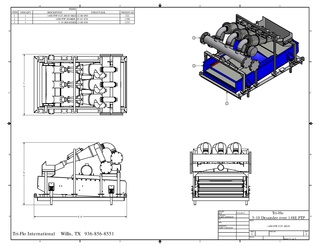 W
WDesanders and desilters are solid control equipment with a set of hydrocyclones that separate sand and silt from the drilling fluids in drilling rigs. Desanders are installed on top of the mud tank following the shale shaker and the degasser, but before the desilter. Desander removes the abrasive solids from the drilling fluids which cannot be removed by shakers. Normally the solids diameter for desander to be separated would be 45~74μm, and 15~44μm for desilter.
 W
WA directional well is an oil industry term for an oil well with a borehole that deviates from a vertically straight line. This is normally done with the intention of hitting several target sands, for instance.
 W
WA drilling rig is an integrated system that drills wells, such as oil or water wells, in the earth's subsurface. Drilling rigs can be massive structures housing equipment used to drill water wells, oil wells, or natural gas extraction wells, or they can be small enough to be moved manually by one person and such are called augers. Drilling rigs can sample subsurface mineral deposits, test rock, soil and groundwater physical properties, and also can be used to install sub-surface fabrications, such as underground utilities, instrumentation, tunnels or wells. Drilling rigs can be mobile equipment mounted on trucks, tracks or trailers, or more permanent land or marine-based structures. The term "rig" therefore generally refers to the complex equipment that is used to penetrate the surface of the Earth's crust.
 W
WEngineers India Limited (EIL) is a Navratna public-sector undertaking of the Government of India under the Ministry of Petroleum and Natural Gas. It was set up in 1965 to provide engineering and related technical services for petroleum refineries and other industrial projects.
 W
WThe European Association of Geoscientists and Engineers (EAGE) is a multi-disciplinary professional association for geoscientists and engineers. It was founded in 1951 and has a worldwide membership. The association changed name from European Association of Exploration Geophysicists in 1995. The association is intended for persons that are studying or otherwise professionally involved in geophysics, petroleum exploration, geology, reservoir engineering, mining, and civil engineering. EAGE operates two divisions: the Oil & Gas Geoscience Division and the Near Surface Geoscience Division. The head office of EAGE is located in the Netherlands, with regional offices in Moscow, Dubai, Kuala Lumpur and Bogota.
 W
WA proppant is a solid material, typically sand, treated sand or man-made ceramic materials, designed to keep an induced hydraulic fracture open, during or following a fracturing treatment. It is added to a fracking fluid which may vary in composition depending on the type of fracturing used, and can be gel, foam or slickwater–based. In addition, there may be unconventional fracking fluids. Fluids make tradeoffs in such material properties as viscosity, where more viscous fluids can carry more concentrated proppant; the energy or pressure demands to maintain a certain flux pump rate that will conduct the proppant appropriately; pH, various rheological factors, among others. In addition, fluids may be used in low-volume well stimulation of high-permeability sandstone wells to the high-volume operations such as shale gas and tight gas that use millions of gallons of water per well.
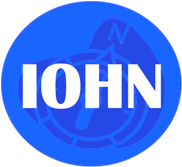 W
WIntegrated Operations in the High North is a unique collaboration project that during a four-year period starting May 2008 is working on designing, implementing and testing a Digital Platform for what in the Upstream Oil and Gas Industry is called the next or second generation of Integrated Operations. The work on the Digital platform is focussed on capture, transfer and integration of Real-time data from the remote production installations to the decision makers. A risk evaluation across the whole chain is also included. The platform is based on open standards and enables a higher degree of interoperability. Requirements for the digital platform come from use cases defined within the Drilling and Completion, Reservoir and Production and Operations and Maintenance domains. The platform will subsequently be demonstrated through pilots within these three domains.
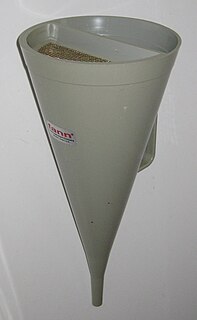 W
WThe Marsh funnel is a simple device for measuring viscosity by observing the time it takes a known volume of liquid to flow from a cone through a short tube. It is standardized for use by mud engineers to check the quality of drilling mud. Other cones with different geometries and orifice arrangements are called flow cones, but have the same operating principle.
 W
WIn the oil industry measured depth, is the length of the borehole. In conventional vertical wells, this coincides with the true vertical depth, but in directional or horizontal wells, especially those using extended reach drilling, the two can deviate greatly. For example, at the time of writing (2012) a borehole in Odoptu field, Sakhalin-I, has the greatest measured depth of any borehole at 12,345 m, but most of this is horizontal, giving it a true vertical depth of only 1,784 m. For comparison, the Kola Superdeep Borehole has a slightly shorter measured depth at 12,262 m, but since this is a vertical borehole, this is also equal to the true vertical depth, making the Kola Superdeep Borehole deeper by a factor of 6.9.
 W
WReservoir engineering is a branch of petroleum engineering that applies scientific principles to the fluid flow through porous medium during the development and production of oil and gas reservoirs so as to obtain a high economic recovery. The working tools of the reservoir engineer are subsurface geology, applied mathematics, and the basic laws of physics and chemistry governing the behavior of liquid and vapor phases of crude oil, natural gas, and water in reservoir rock. Of particular interest to reservoir engineers is generating accurate reserves estimates for use in financial reporting to the SEC and other regulatory bodies. Other job responsibilities include numerical reservoir modeling, production forecasting, well testing, well drilling and workover planning, economic modeling, and PVT analysis of reservoir fluids. Reservoir engineers also play a central role in field development planning, recommending appropriate and cost effective reservoir depletion schemes such as waterflooding or gas injection to maximize hydrocarbon recovery. Due to legislative changes in many hydrocarbon producing countries, they are also involved in the design and implementation of carbon sequestration projects in order to minimise the emission of greenhouse gases.
 W
WThe Society of Exploration Geophysicists (SEG) is a learned society dedicated to promoting the science and education of exploration geophysics in particular and geophysics in general. The Society fosters the expert and ethical practice of geophysics in the exploration and development of natural resources, in characterizing the near-surface, and in mitigating earth hazards. As of November 2019, SEG has more than 14,000 members working in more than 114 countries. SEG was founded in 1930 in Houston, Texas but its business office has been headquartered in Tulsa, Oklahoma since the mid-1940s. While most SEG members are involved in exploration for petroleum, SEG members also are involved in application of geophysics methods to mineral exploration as well as environmental and engineering problems, archaeology, and other scientific endeavors. SEG publishes The Leading Edge (TLE), a monthly professional magazine, Geophysics, a peer-reviewed archival publication, and Interpretation, a peer-reviewed journal co-published by SEG and the American Association of Petroleum Geologists.
 W
WThe Society of Petroleum Engineers (SPE) is a 501(c)(3) not-for-profit professional organization whose stated mission is "to collect, disseminate, and exchange technical knowledge concerning the exploration, development and production of oil and gas resources and related technologies for the public benefit; and to provide opportunities for professionals to enhance their technical and professional competence".
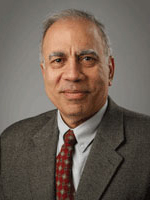 W
WMohamed Yousef Soliman is a professor and the former chairperson of the department of Petroleum Engineering at Texas Tech University. After working for Halliburton for 32 years, he joined Texas Tech in January 2011. He obtained his bachelor's degree in petroleum engineering from Cairo University in 1971. Having completed his bachelor's degree he came to the United States to continue higher education. He received his masters and doctorate degrees, both in Petroleum engineering, from Stanford University in 1975 and 1978 His M. S. Thesis was "Rheological Properties of Emulsion Flowing Through Capillary Tubes Under Turbulent Conditions,"; his Ph.D. thesis, "Numerical Modeling of Thermal Recovery Processes."
 W
WSteam stripping is a process used in petroleum refineries and petrochemical plants to remove volatile contaminants, such as hydrocarbons and other volatile organic compounds (VOCs), from wastewater. It typically consists of passing a stream of superheated steam through the wastewater.
 W
WA Swivel is a mechanical device used on a drilling rig that hangs directly under the traveling block and directly above the kelly drive, that provides the ability for the kelly to rotate while allowing the traveling block to remain in a stationary rotational position while simultaneously allowing the introduction of drilling fluid into the drill string.
 W
WA traveling block is the freely moving section of a block and tackle that contains a set of pulleys or sheaves through which the drill line is threaded or reeved and is opposite the crown block.
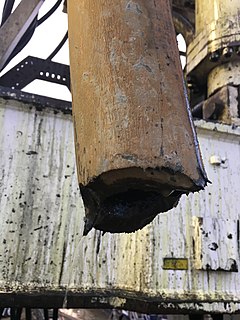 W
WTripping pipe is the physical act of pulling the drill string out of the wellbore and then running it back in. This is done by physically breaking out or disconnecting every other 2 or 3 joints of drill pipe at a time and racking them vertically in the derrick. When feasible the driller will start each successive trip on a different "break" so that after several trips fresh pipe dope will have been applied to every segment of the drill string.